Deciding whether to buy a halogen oven or an air fryer? After trying both, we think there's no competition
We test whether a halogen oven or air fryer is better for your kitchen

Molly Cleary
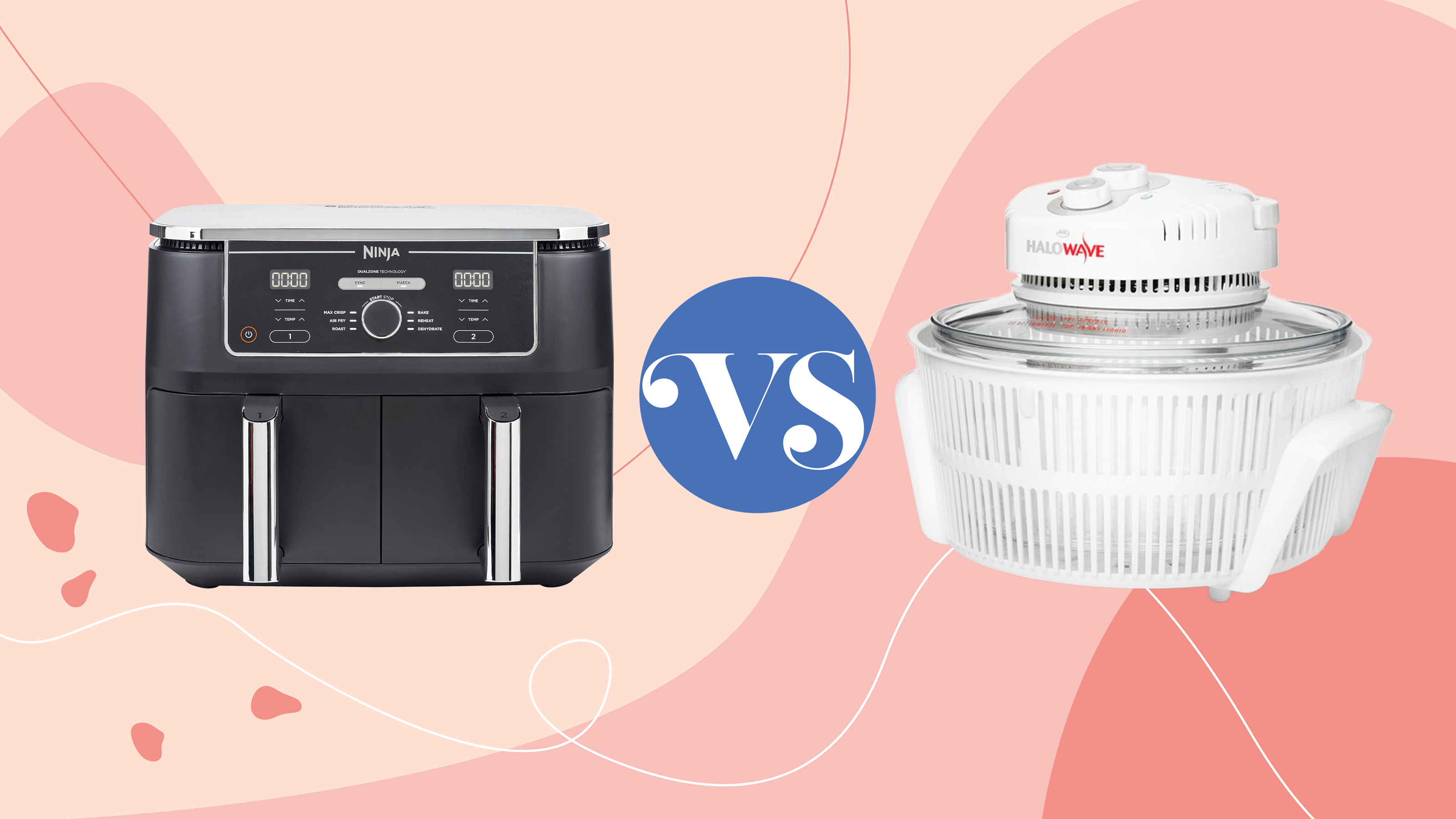
Debating buying a halogen oven over an air fryer? It seems a reasonable idea, especially given the money-saving claims floating around about these very 1980s-chic appliances. Plus, if you've successfully resisted the allure of the ever-talked-about best air fryers thus far, you might think that you've found the real next big thing.
The important question to ask here is: is a halogen oven more efficient than an air fryer? Because they're certainly not prettier, but you can pick them up for cheap.
Air fryers, in contrast, have proven more useful to many people than a conventional, built-in oven but tend to be a fairly big initial investment. Though I for one use my oven far less than I did before I got an air fryer.
So, could a halogen oven actually be even betterr? Here's my expert take, as a home economist, on how these two appliances compare after trying them side by side and which one is cheaper for your home in the long run.
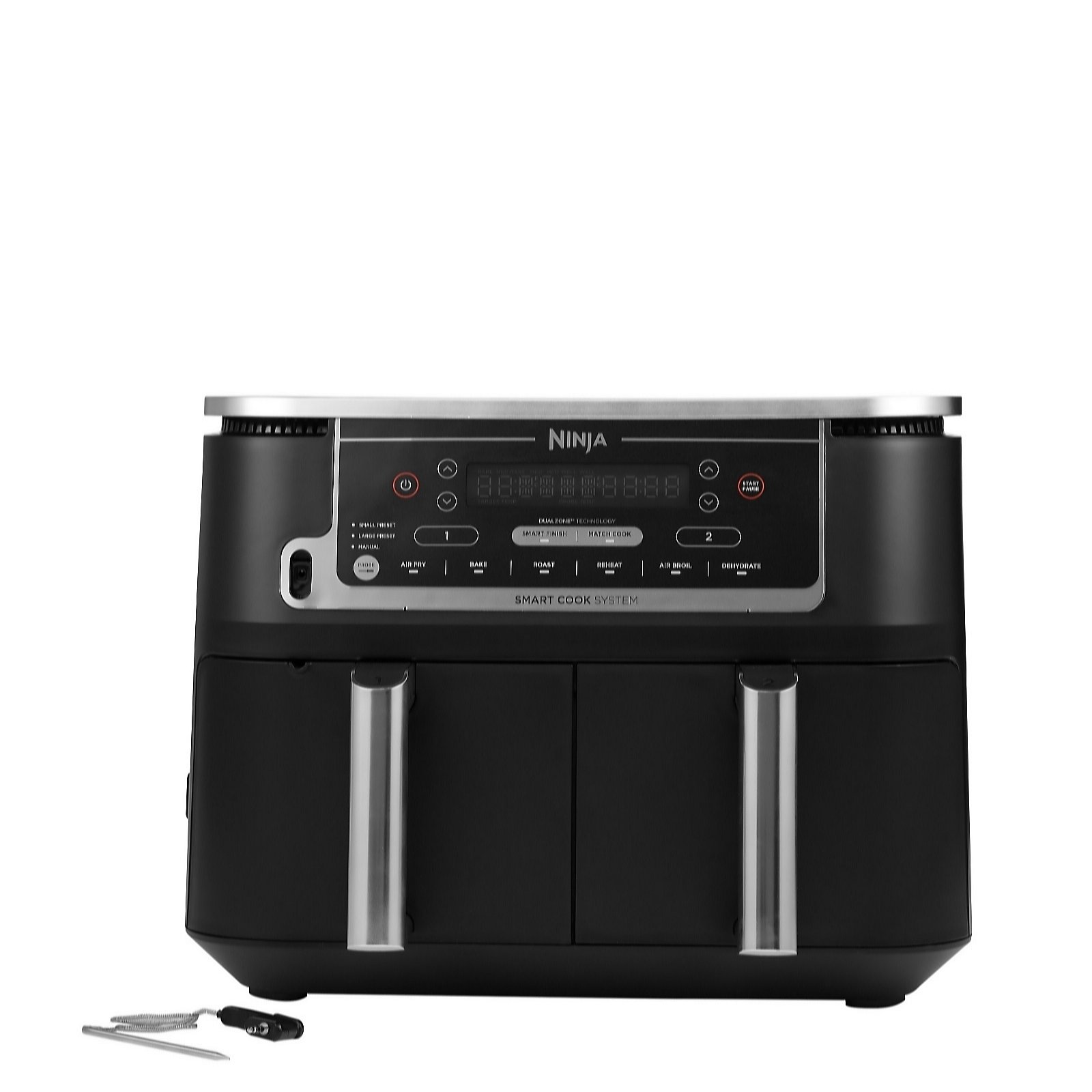
This is the OG best Ninja air fryer and you'll find it in kitchens up and down the country. It is phenomenally quick (so much so that you'll be shocked the first time you use it) and newer versions have smart features (like a temperature probe for cooking meat to perfection) that make it even more worthwhile. It uses a fan to circulate heat around both cooking drawers.

Affordable, with a huge capacity and claiming to work efficently and cheaply, this oven has a temperature range of between 60 and 250 degrees celsius. It cooks your food via the bulb element in the top of the lid but doesn't even come close to the Ninja in terms of cooking performance.
Air fryer vs halogen oven
Not only do I review lots of these appliances, but I cook frequently in my own trusty air fryer. However, I’m pretty new to halogen ovens. My dad had one for years and swore by it, but I never used it, nor have I ever been asked to review one, so I was interested to get my hands on one and try it out.
I hooked up both the halogen oven and an air fryer to an electricity meter to see which was best for power consumption. But I also compared how quickly they cooked the same foods as well as whether I preferred the taste and texture of foods cooked in one over the other.
The results make for pretty interesting reading and in my opinion, there’s a clear winner: the ever-popular air fryer. Scroll down to find out why I won't be switching to a halogen oven.
Sign up to our newsletter for style inspiration, real homes, project and garden advice and shopping know-how
How does a halogen oven work?

So, what is a halogen oven? To put it simply, it's a countertop cooker that uses a halogen light bulb as its heat source. The bulb is housed in the lid along with a fan to distribute heat. The main cooking zone is usually a glass bowl and the bulb will pulse on and off to maintain the temperature inside the bowl.
They have a reputation as a low-energy alternative to standard electric ovens and are said to consume up to 75% less energy than an electric oven.
How does an air fryer work?
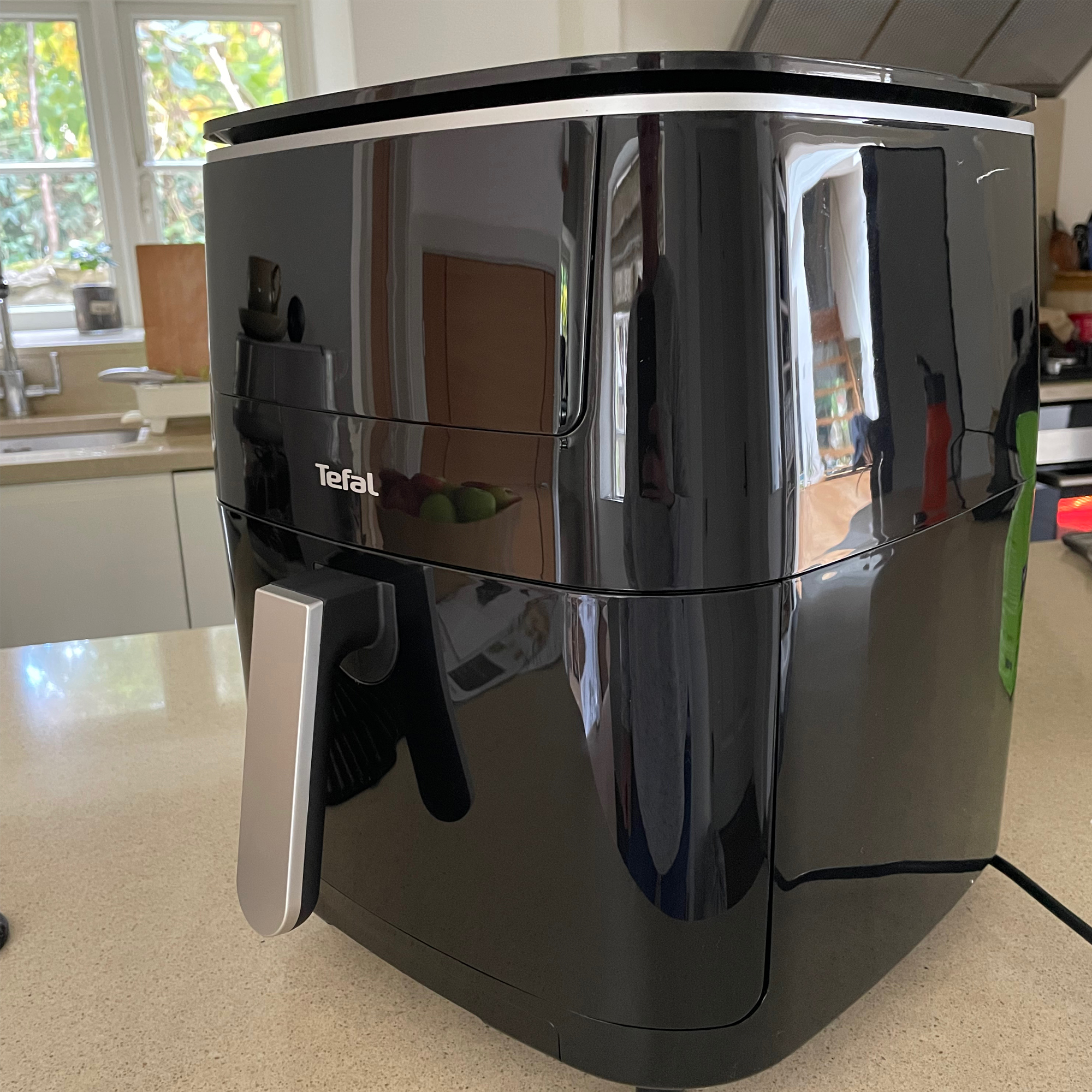
Air fryers are essentially mini convection ovens, they produce heat using an element and a high-powered fan circulates the heat evenly around the small cooking space.
Drawer style air fryers have become the most common type, food is placed on a perforated rack inside a drawer that can be easily removed when the contents need a turn or a shake.
But air fryers are also commonly combined with other appliances, many of the best multi-cookers now have an air fryer mode. Similarly, some air fryers offer multiple cooking functions such as grill, steam, bake, and dehydrate.
Which one cooks fastest?
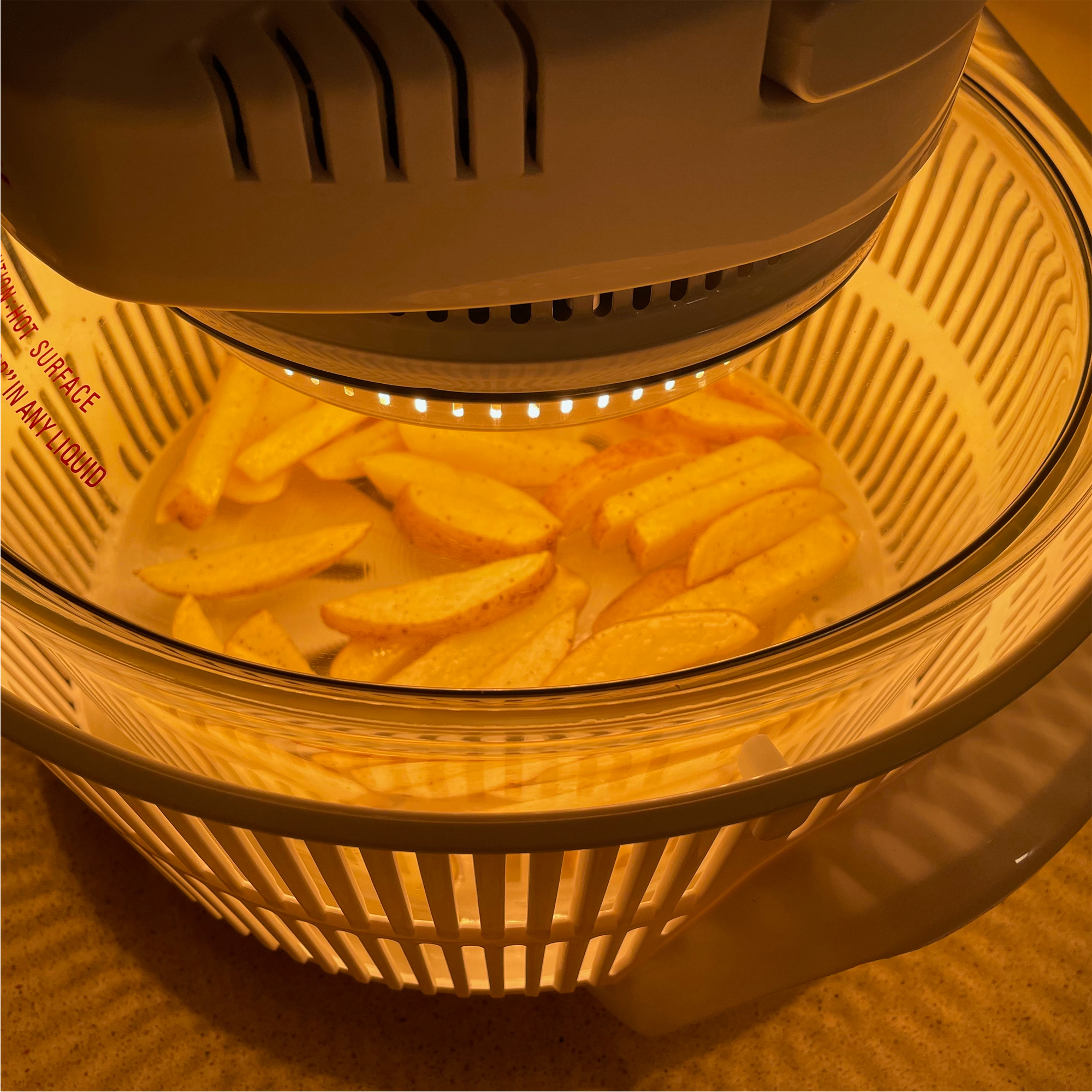
First up let’s talk about preheating. The halogen oven I tried recommended a 5-10 minute preheat. I stuck to five minutes, I didn’t want to put it on empty for 10 minutes, that felt like a waste. My usual air fryer has an automatic preheat that takes around 3 minutes, but I’ve reviewed certain models recently like the Tefal EasyFry 3-in-1 that don’t need preheating at all.
Bar a couple of exceptions, the food cooked in the air fryer was cooked much quicker than in the halogen oven. The most notable example was scampi and chips. In the air fryer I allowed the raw potato batons 18 minutes to cook, adding the scampi and cooking with the chips for a further 10 minutes, so the whole lot was done in 28 minutes.
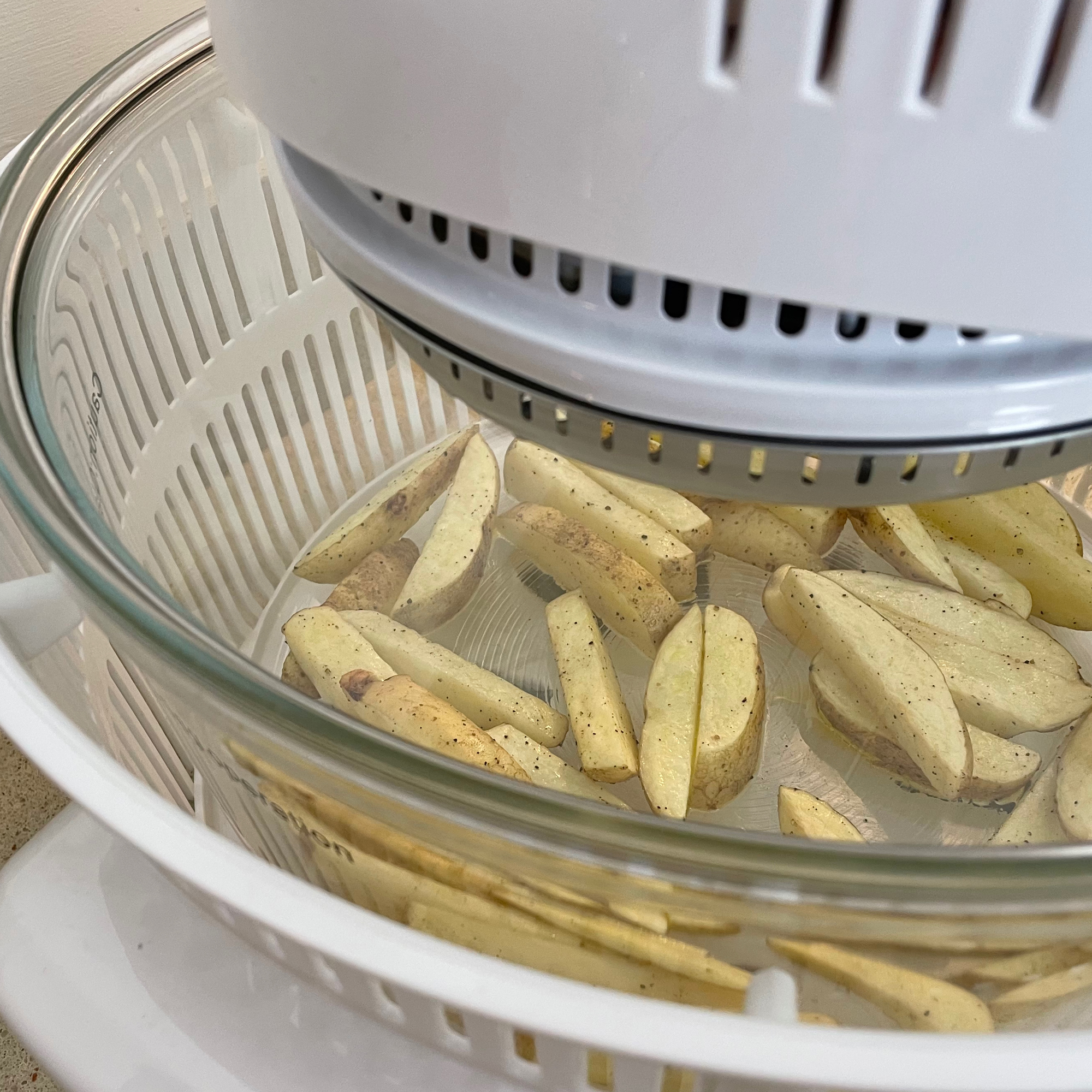
Whereas in the halogen oven the chips were cooking for 35 minutes before I added the scampi, I then cooked it all for a further 25 minutes. That’s a hunger-inducing 60 minute total cook time – that means it took double the time it took in my air fryer.
Broccoli florets also required double the cooking time in the halogen oven, taking 12 minutes as opposed to 6 minutes in the air fryer. Meanwhile, bacon and halloumi took a similar amount of time in both cookers. As quick cooking foods, this isn't overly surprising.
A whole chicken roasted in a speedy 60 minutes in the air fryer, but needed 75 minutes in the halogen oven, which is 25% longer. Likewise, for the veggies out there, a Quorn escalope that cooked in 15 minutes in the Lakeland Digital Compact Air Fryer required 25 minutes in the halogen oven.
So, if it’s speed you’re after, an air fryer is the way to go in almost all cases, especially if you take into account potential preheat times.

Which is cheapest to run?
Okay, let’s cut to the chase, if you’re looking to buy one of these appliances to save on energy then this is the bit you’re interested in - how much an air fryer costs to run compared to a halogen oven. I recorded how much energy used when roasting a chicken as well as cooking scampi and chips. So let me break it down for you.
Chicken: As I already mentioned above, a whole chicken cooked faster in the air fryer and according to the energy meter it used 1.074 kWh of energy. I cooked it in the Tefal EasyFry 3-in-1 which doesn’t require preheating so that also helped keep the reading low. At the inital time of writing (October 2022), electricity costs on average were 35p per kWh, meaning it cost me around 37.6p to roast the chicken in the air fryer. In 2024, the price cap was set to 22p per kWh, meaning it would cost 24.2p.
In addition to the 75 minutes taken to roast a chicken in the halogen oven, there was the 5 minute preheat to account for as well. The total energy used was 1.2 kWh, meaning I spent 42p in 2022, roasting the chicken in the halogen oven. In 2024, this would have cost me 26.4p.
So while there wasn’t much in it - less than a couple of pence in difference - over time, there is an argument that this could start to stack up.

Scampi and chips: Once again the air fryer was far quicker so there’s no surprises that it used less electricity. My scampi and chips dinner in the air fryer used 0.68 kWh compared to 1 kWh in the halogen oven. So in 2022, this set me back around 24p in the air fryer or 35p in the halogen oven. In 2024, the price difference was around 15p in the air fryer, and 22p in the halogen oven,
This is a starker difference and over the cost of the year, it's a matter of pounds rather than pence that can be saved.
In both cases the air fryer was cheaper thanks to its speedy cook times. However, if comparing them like-for-like, the halogen oven used less electricity per hour than the air fryer, but that’s not much help if the longer cook times cost you more in the end. So I think it’s fair to say the air fryer wins this round too.

Taste test
Yes, yes and yes! Scampi in the air fryer has a crunchy crumb and chips get nicely crisped. But sadly, in the halogen oven the results were somewhat soggier. Plus, I was disappointed that the chips weren’t as fluffy on the inside when cooked in the halogen oven compared to air fried chips. I’m sure it all would have crisped up more eventually, but I wasn’t willing to wait longer than 60 minutes for what's usually a pretty speedy dinner.
The skin on a roast chicken browned and crisped up beautifully in the air fryer and though it was perfectly acceptable in the halogen oven, we preferred the air fried chicken. Having said that, the meat underneath the skin was moist and tender in both cookers.

There wasn’t much difference between the air fried bacon and the bacon cooked in the halogen oven. This is because in the halogen oven I put the bacon on a high rack (supplied with the oven), lifting it up much closer to the heat source, which meant the fat rendered nicely.
Unfortunately, I didn’t enjoy halloumi cooked in the halogen oven, it crisped up less than the air fried version, but somehow dried out at the same time. Similarly, broccoli didn’t get that deliciously crisp and charred texture in the halogen oven that I enjoy when it has been air fried, though it was still nicely cooked.
Overall I preferred the taste and texture of the air fried foods, meaning the air fryer wins out overall, and is certainly more successful at crisping foods and creating deliciously crunchy coatings.

Which is easiest to use and clean?
Neither is difficult to use, the halogen oven has a very simple setup with just a timer dial and temperature dial, so I got to grips with it pretty quickly. But it felt overly simplified with quite dated dial controls.
In general, most air fryers have a digital display and touch-sensitive controls for time and temperature. Some offer preset cooking modes for common foods like chips and nuggets. And some include additional cooking functions such as bake, steam, grill, and dehydrate, including our top rated option out of the dozens we've tested, the Ninja Foodi FlexDrawer. Air fryers tend to be simple to use but at the same time, offer a bit more functionality than a halogen oven.
The halogen oven I tried has a large, heavy glass bowl that barely fits in my sink. Nothing stuck to it, so it wasn’t difficult to wash, but it was cumbersome and awkward. Air fryers generally have non-stick metal drawers and some, but not all, can go in the dishwasher which makes for speedy cleaning.
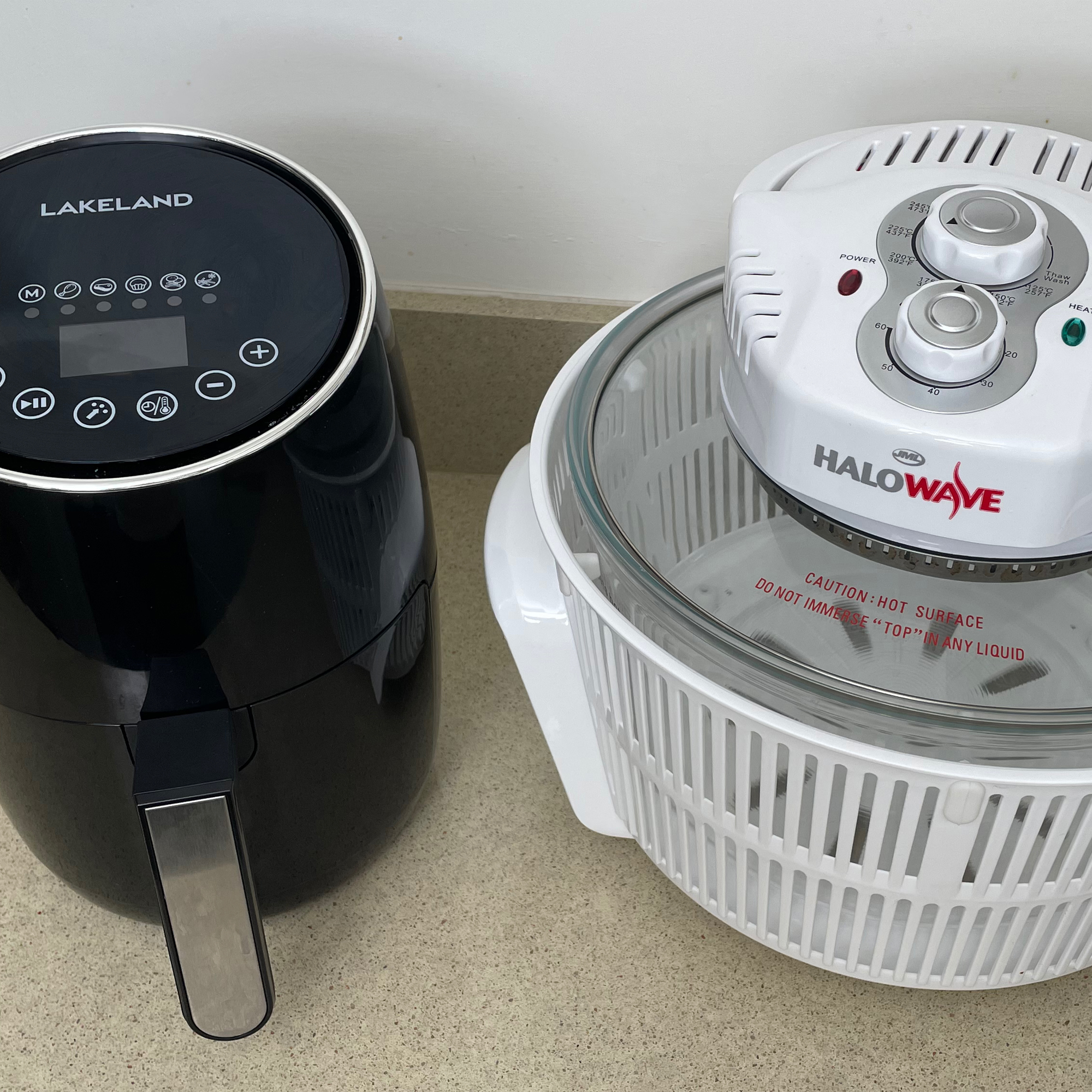
Which is cheaper?
In 2022, I tried out the JML Halowave which cost £59.99 at the time of writing, with a large 10.5 litre capacity. It's now available for £36.00 from Argos, showing that halogen ovens are still very attractively priced. They’re certainly the cheaper option, which is a big draw.
Air fryers by comparison are expensive. I used a combination of three different air fryers during the process of writing this article, the Lakeland Digital Compact Air Fryer which is £89.99, the Tefal EasyFry 3-in-1 which is just under £200 and has a 6.2 litre capacity, and I also used the Ninja Foodi Health Grill and Air fryer, the most expensive of the bunch at £235.
Some top-rated air fryers can cost as much as £250, but price depends on capacity, brand, and functionality. The more expensive models often include multiple cooking modes and fancy digital control panels that you don’t get with a halogen oven. You can also get cheap models with limited functionality.
Which one should you buy?
If you’ve read all of the above, it won’t surprise you that air fryers get my vote. While the initial investment is higher, the food cooks better, faster, and consequently they use less electricity. What’s more, there are so many different options, from large capacity dual drawer models to those with multiple cooking functions bundled in. For me it’s a no-brainer, an air fryer is the way to go!
Who put a halogen oven vs an air fryer to the test?
Helen is one of Ideal Home's kitchen experts, reviewing appliances (often air fryers) to let us know what they're worth. She is a trained home economist, and worked at Good Housekeeping before becoming a freelancer reviewer.
She lives in a village in Buckinghamshire and reviewed this halogen oven and air fryer side by side in her kitchen, as you can see from the photos. She tested both of these appliances by using them to cook all sorts of everyday foods for herself and her husband, so that you can see how they would measure up in your home.

After completing a Home Economics degree, Helen went on to work for the Good Housekeeping Institute and has been reviewing home appliances ever since. She lives in a small village in Buckinghamshire in the UK, where she reviews all sorts of home and garden appliances for Ideal Home using her wealth of experience.
- Molly ClearyKitchen Appliances Editor